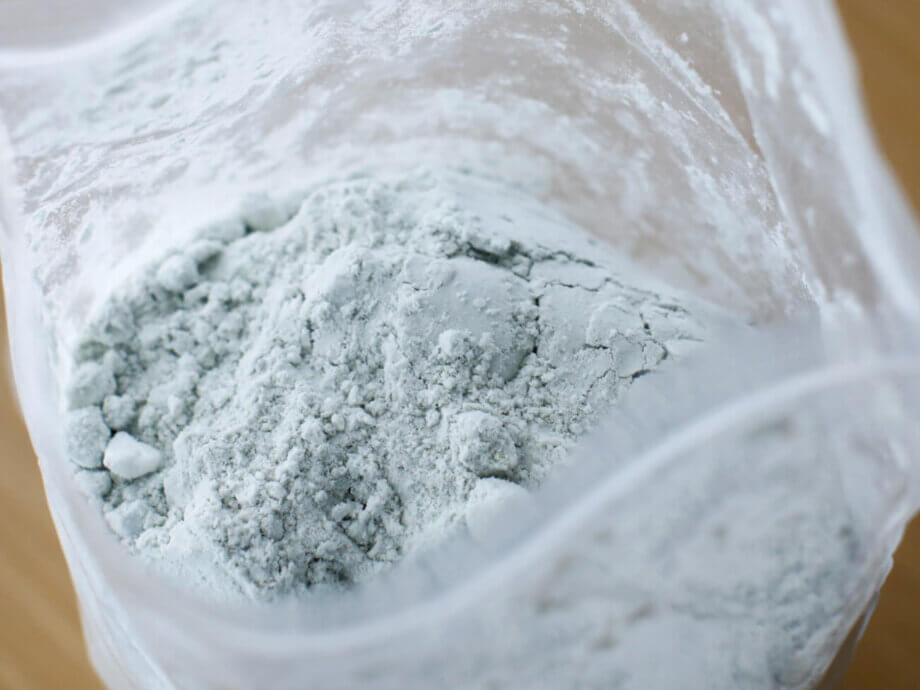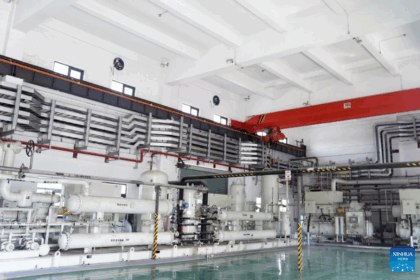China’s Expanding Drug Control: The Global Impact of Fentanyl, Synthetic Cannabis, and Nitazene Regulations
China has taken center stage in the global fight against synthetic drugs, implementing some of the world’s strictest and most comprehensive controls on substances like fentanyl, synthetic cannabis, and, most recently, nitazenes. As the international community grapples with a surge in synthetic opioid-related deaths, China’s regulatory actions are reshaping the landscape of illicit drug production, trafficking, and abuse. This article explores the evolution of China’s drug control policies, the science and dangers behind these substances, the international ramifications, and the ongoing challenges in curbing the synthetic drug trade.
- China’s Expanding Drug Control: The Global Impact of Fentanyl, Synthetic Cannabis, and Nitazene Regulations
- What Are Fentanyl, Synthetic Cannabis, and Nitazenes?
- China’s Regulatory Approach: From Substance-by-Substance to Whole-Category Control
- Why Are Nitazenes So Dangerous?
- China’s Domestic Impact: Declining Drug Use and Changing Patterns
- International Ramifications: Cooperation, Tensions, and Shifting Supply Chains
- The Challenge of Enforcement: The Scale and Sophistication of the Synthetic Drug Trade
- Global Health and Policy Implications
- China’s “Full Control” Model: A Blueprint for the World?
- In Summary
What Are Fentanyl, Synthetic Cannabis, and Nitazenes?
To understand the significance of China’s regulatory measures, it’s important to clarify what these substances are and why they pose such a threat.
Fentanyl is a synthetic opioid, originally developed for medical use as a powerful painkiller. It is approximately 100 times more potent than morphine and has legitimate applications in treating severe pain, especially in cancer patients. However, illicitly manufactured fentanyl and its analogues have flooded illegal drug markets, particularly in North America, leading to tens of thousands of overdose deaths annually. Even a tiny amount can be fatal.
Synthetic cannabis refers to a range of man-made chemicals designed to mimic the effects of THC, the psychoactive component of marijuana. These substances, often sprayed onto plant material and sold as “herbal incense” or “spice,” can be far more potent and unpredictable than natural cannabis, causing severe health effects including psychosis, seizures, and death.
Nitazenes are a class of synthetic opioids first developed in the 1950s by Swiss pharmaceutical company CIBA. Never approved for medical use due to their extreme potency, nitazenes have recently re-emerged in illicit drug markets. Some variants are up to 40 times stronger than fentanyl and hundreds of times more potent than heroin. They are often found mixed into heroin, counterfeit pills, or other street drugs, frequently without users’ knowledge, dramatically increasing the risk of fatal overdose.
China’s Regulatory Approach: From Substance-by-Substance to Whole-Category Control
Historically, drug control laws around the world have targeted specific substances as they emerge, a “whack-a-mole” approach that traffickers have exploited by making minor chemical modifications to evade regulation. Recognizing this, China has pioneered a “whole-category” or “blanket” control model, regulating entire classes of substances based on their chemical structure or pharmacological effects.
In 2019, China became the first country to impose whole-category controls on all fentanyl-related substances, even though it had not experienced large-scale domestic abuse of fentanyl. This move was partly in response to international pressure, especially from the United States, which was facing a devastating opioid crisis fueled by fentanyl imports. In 2021, China extended this approach to synthetic cannabinoids, and in 2024, it added all nitazenes and 12 other new psychoactive substances to its controlled drug list.
Wu Tingfang, head of the Precursor and New Psychoactive Substance Control Division of China’s Ministry of Public Security, emphasized the significance of these measures, stating that China is now the first country to have implemented whole-category control of these three major classes of drugs. According to Wu, these actions are “an important measure to prevent the harm posed by new types of drugs and protect people’s health.”
Why Are Nitazenes So Dangerous?
Nitazenes have rapidly become a major concern for public health and law enforcement agencies worldwide. Their extreme potency means that even minute quantities can cause fatal overdoses. Unlike traditional plant-based drugs like heroin, nitazenes and other synthetic opioids can be manufactured anywhere with access to precursor chemicals, making them attractive to traffickers and difficult for authorities to control.
Dr. Christopher Holstege, director of the Blue Ridge Poison Center at the University of Virginia, explains:
Nitazenes are psychoactive substances, or “designer drugs,” that aren’t controlled by any laws or conventions but pose significant health risk to the public. Some nitazenes could be hundreds to thousands of times more potent than morphine and 10 to 40 times stronger than fentanyl.
Because nitazenes are often mixed into other drugs or pressed into counterfeit pills, users are frequently unaware of what they are taking. This has led to a wave of overdoses in Europe and North America, with hundreds of deaths attributed to nitazenes since 2019. Specialized laboratory testing is required to detect these compounds, and standard fentanyl test strips do not identify nitazene analogues, complicating public health responses.
China’s Domestic Impact: Declining Drug Use and Changing Patterns
China’s aggressive regulatory stance has had a measurable impact on domestic drug trends. According to the Office of China National Narcotics Control Commission, the number of registered drug users in China has declined for seven consecutive years. By the end of 2024, the number of drug users had fallen by 16.7% year-on-year, accounting for just 0.054% of the country’s population.
The pattern of drug abuse in China is also shifting. While the use of traditional drugs like opioids and methamphetamine is decreasing, the abuse of nontraditional and unregulated substances has become more prominent. Authorities have cracked down on the illegal processing and trafficking of synthetic cannabis, resulting in significant drops in cases, arrests, and quantities seized.
China’s Ministry of Public Security, National Health Commission, and National Medical Products Administration have worked together to ensure that legitimate uses of controlled substances in medicine, industry, and research are not unduly affected. Exceptions can be made for substances found to serve lawful purposes, and authorities may remove such substances from the controlled list if warranted.
International Ramifications: Cooperation, Tensions, and Shifting Supply Chains
China’s role in the global synthetic drug trade is complex. As the world’s largest producer of chemicals and pharmaceuticals, China has been both a source of finished synthetic drugs and, increasingly, of precursor chemicals used by criminal organizations in other countries.
US-China Cooperation and Tensions
The United States has long accused China of being the primary source of illicit fentanyl and its precursors, fueling the worst drug crisis in American history. In 2019, under pressure from the US, China scheduled all fentanyl-related substances. This led to a reduction in direct shipments of finished fentanyl to the US, but traffickers adapted by shipping precursor chemicals to Mexico, where cartels synthesize fentanyl for smuggling across the US border.
US-China counternarcotics cooperation has been highly contingent on broader diplomatic relations. After a period of no cooperation, a breakthrough in late 2023 saw the resumption of joint efforts, including the establishment of a US-China Counternarcotics Working Group and China’s scheduling of additional fentanyl precursors and nitazenes. However, ongoing disputes—such as the imposition of “fentanyl tariffs” by the US—have strained this cooperation. Chinese officials have repeatedly emphasized that the fentanyl crisis is primarily a US domestic issue, pointing to China’s own low rates of drug abuse and strict enforcement.
Europe and the Rise of Nitazenes
Europe has seen a surge in nitazene-related deaths, particularly in the UK, Estonia, Sweden, and Ireland. Investigations have traced many of these substances back to Chinese suppliers, who advertise nitazenes openly on international trading platforms, social media, and even professional networking sites. The Bellingcat investigation found over 1,000 online ads for nitazenes, many linked to Chinese companies, some of which are officially registered and certified.
Despite China’s efforts to ban specific nitazene variants, manufacturers quickly adapt by creating new analogues not yet covered by regulations. The European Union Drugs Agency currently monitors dozens of new synthetic opioids, and law enforcement agencies warn that the market for these substances is developing rapidly.
The Challenge of Enforcement: The Scale and Sophistication of the Synthetic Drug Trade
One of the greatest challenges in controlling synthetic drugs is the sheer scale and sophistication of the industry. China is home to tens of thousands of pharmaceutical and chemical companies, many of which operate online and ship products globally. While most are legitimate, a significant minority are involved in the illicit trade of synthetic drugs and precursors.
Suppliers use a variety of tactics to evade detection, including mislabeling shipments, using fake packaging, and exploiting high-volume global shipping networks. Online sales representatives, often young graduates, may not initially realize the nature of the products they are selling. Once aware, many see it as a lucrative business, with little concern for the consequences.
Dr. Louise Shelley, director of the Terrorism, Transnational Crime and Corruption Center at George Mason University, notes:
It is criminal entrepreneurship, but in a legitimate framework which is really unique. I have not seen such professionalism and a corporate element in this anywhere else in the world. Criminal activity was a type of social mobility.
International law enforcement agencies face an uphill battle. Even as platforms like TradeAsia, TradeFord, and LinkedIn remove illegal drug ads when notified, new listings appear constantly. The adaptability of traffickers, combined with the high potency and low volume of synthetic opioids, makes detection and interdiction extremely difficult.
Global Health and Policy Implications
The proliferation of synthetic opioids like fentanyl and nitazenes has transformed the global drug landscape. In the United States, synthetic opioids are now the leading cause of drug overdose deaths, with over 70,000 fatalities attributed to fentanyl in 2022 alone. Nitazenes, while less prevalent, are causing increasing concern due to their potency and the difficulty of detection.
European countries are bracing for the possibility of a synthetic opioid crisis similar to that seen in North America. The decline in heroin production in Afghanistan, following the Taliban’s poppy ban, has created uncertainty in traditional drug markets, potentially opening the door for synthetic alternatives like nitazenes to fill the gap.
Public health responses are complicated by the fact that many users are unaware they are consuming synthetic opioids. Overdose symptoms can develop rapidly, and while naloxone (Narcan) can reverse nitazene overdoses, larger and multiple doses may be required. Many health systems lack the capacity to detect these substances in toxicology samples, leading to underreporting of cases.
Governments are responding with a mix of law enforcement, regulatory, and harm reduction strategies. The UK, for example, has classified nitazenes as Class A drugs, increased border surveillance, and expanded access to naloxone. The US and China have resumed limited cooperation on counternarcotics, though broader geopolitical tensions remain a barrier to sustained progress.
China’s “Full Control” Model: A Blueprint for the World?
China’s proactive, whole-category approach to drug control is being watched closely by other countries. By regulating entire classes of substances, China aims to stay ahead of traffickers who exploit loopholes in substance-by-substance scheduling. This model has been credited with reducing domestic drug abuse and limiting the export of controlled substances, though critics argue that enforcement gaps and the adaptability of traffickers continue to pose significant challenges.
Shan Yehua, deputy director of the Office of China National Narcotics Control Commission, highlights the global nature of the problem:
The control of new psychoactive substances is a difficult issue for all countries in the world. It can hardly be solved by only one country. We stand ready to contribute China’s solutions and China’s wisdom to addressing the challenge.
China’s experience demonstrates the importance of political will, interagency coordination, and rapid regulatory adaptation. However, as long as global demand for synthetic drugs remains high, traffickers will find ways to exploit weaknesses in the system, whether in China or elsewhere.
In Summary
- China has implemented world-leading “whole-category” controls on fentanyl, synthetic cannabis, and nitazenes, aiming to curb the production, trafficking, and abuse of these dangerous substances.
- Nitazenes are a new class of ultra-potent synthetic opioids, up to 40 times stronger than fentanyl, causing a growing number of overdose deaths worldwide.
- China’s regulatory actions have contributed to a decline in domestic drug use and have shifted trafficking patterns, but traffickers continue to adapt by creating new analogues and exploiting global shipping networks.
- International cooperation, especially between China and the US, is crucial but complicated by broader geopolitical tensions and differing policy priorities.
- The global synthetic drug trade is highly sophisticated, with Chinese suppliers playing a major role in the supply of both finished drugs and precursor chemicals.
- Public health systems face challenges in detecting and responding to synthetic opioid overdoses, and harm reduction measures like naloxone remain vital.
- China’s “full control” model offers a proactive blueprint for drug regulation, but global solutions require coordinated action, robust enforcement, and a focus on reducing demand as well as supply.












